After 11 cutters and 25 year’s sea time, I have come to believe that cutters take on the character and soul of their crew. Pamlico to my mind is profoundly the clearest example of this notion.
~ Retired Chief Warrant Officer R. David Lewald, U.S. Coast Guard
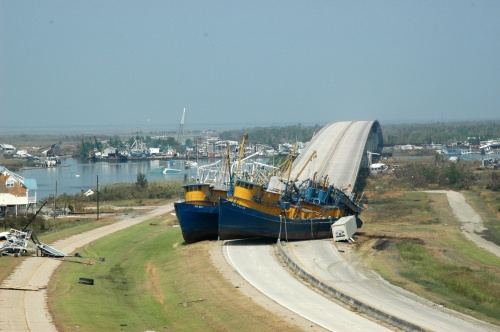 In 2005, after Hurricane Katrina came ashore, the Coast Guard Cutter Pamlico (WLIC-800), a construction tender, had been the first Coast Guard cutter on scene in New Orleans. For seven days, the tender’s crew of 16 helped coordinate the evacuation of thousands of victims across the Mississippi River using a temporary base at the Algiers Ferry Terminal. By improvising, the crew and commanding officer, Chief Warrant Officer R. David Lewald, put meat on the bones of Coast Guard District 8’s hurricane response effort. However, Pamlico was not a search and rescue asset; it was an aids to navigation (ATON) construction tender designed to build and repair navigational aids.
In 2005, after Hurricane Katrina came ashore, the Coast Guard Cutter Pamlico (WLIC-800), a construction tender, had been the first Coast Guard cutter on scene in New Orleans. For seven days, the tender’s crew of 16 helped coordinate the evacuation of thousands of victims across the Mississippi River using a temporary base at the Algiers Ferry Terminal. By improvising, the crew and commanding officer, Chief Warrant Officer R. David Lewald, put meat on the bones of Coast Guard District 8’s hurricane response effort. However, Pamlico was not a search and rescue asset; it was an aids to navigation (ATON) construction tender designed to build and repair navigational aids.
Katrina destroyed between 70 and 90 percent all of the navigational aids on the Mississippi River south of Baton Rouge. This number totaled approximately 1,900 lights, buoys, day beacons, lighthouses, and range lights stretching over 255 miles. It was one thing for relief ships like the Coast Guard Cutter Spencer (WMEC-905), medium-endurance cutter, to risk sailing up the river despite the missing aids, but river commerce would not resume and port facilities not re-open until critical aids were re-established. Billions of dollars hung in the balance with the Midwest’s grain harvest soon to be exported through the port facilities at Baton Rouge.
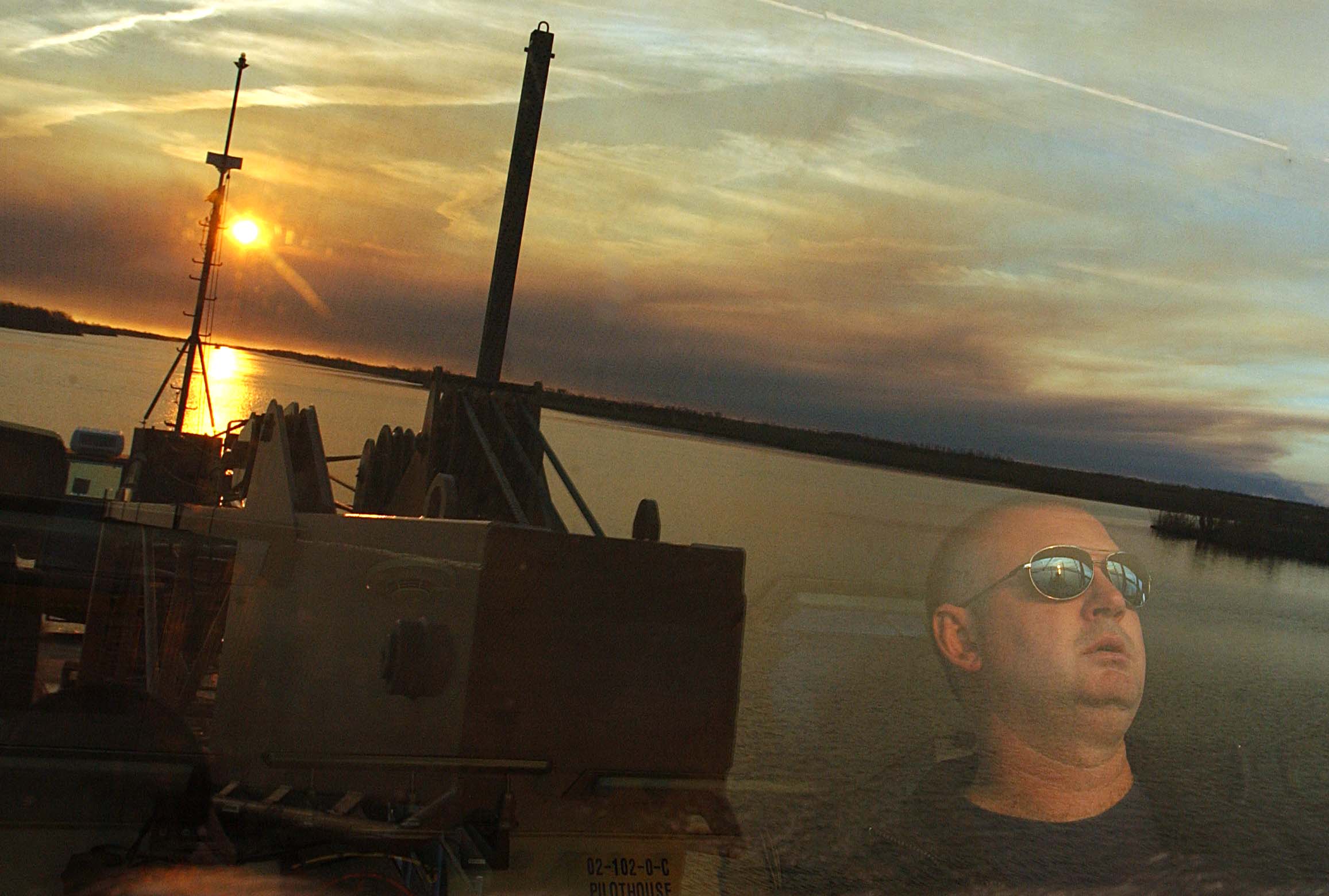 On Sept. 6th, the Pamlico pushed off the bank in Chalmette and headed downriver bound for Venice, Louisiana, at the mouth of the Mississippi. The damage in New Orleans had been profound, but the devastation appeared apocalyptic as Pamlico steamed south of the city. In New Orleans, buildings had been flooded or even wholly submerged, but structures farther south had been utterly demolished. Barges, tugs and fishing boats were strewn across the landscape as if scattered by an angry giant. The normally muddy Mississippi River water was full of storm runoff, including large Nutria rats, cattle carcasses and all manner of debris, sewage and pollution.
On Sept. 6th, the Pamlico pushed off the bank in Chalmette and headed downriver bound for Venice, Louisiana, at the mouth of the Mississippi. The damage in New Orleans had been profound, but the devastation appeared apocalyptic as Pamlico steamed south of the city. In New Orleans, buildings had been flooded or even wholly submerged, but structures farther south had been utterly demolished. Barges, tugs and fishing boats were strewn across the landscape as if scattered by an angry giant. The normally muddy Mississippi River water was full of storm runoff, including large Nutria rats, cattle carcasses and all manner of debris, sewage and pollution.
The devastation around Venice was staggering. Nearly 30 feet of storm surge had rolled over the area doing damage that was compared to an atomic bomb. At Coast Guard Station Venice, an improperly secured shipping container had floated free and crashed around like a nautical wrecking ball, leveling much of the facility. Electrical power was months away from being restored, so the nights were very dark. Once the sun set it seemed like the only light visible for a 100 miles was the floodlight shining on the small American flag flying on the bow of Pamlico’s construction barge.
Pamlico’s first order of business was salvage operations at the base in Venice. Personnel from the construction tender and Aids to Navigation Team (ANT) Venice recovered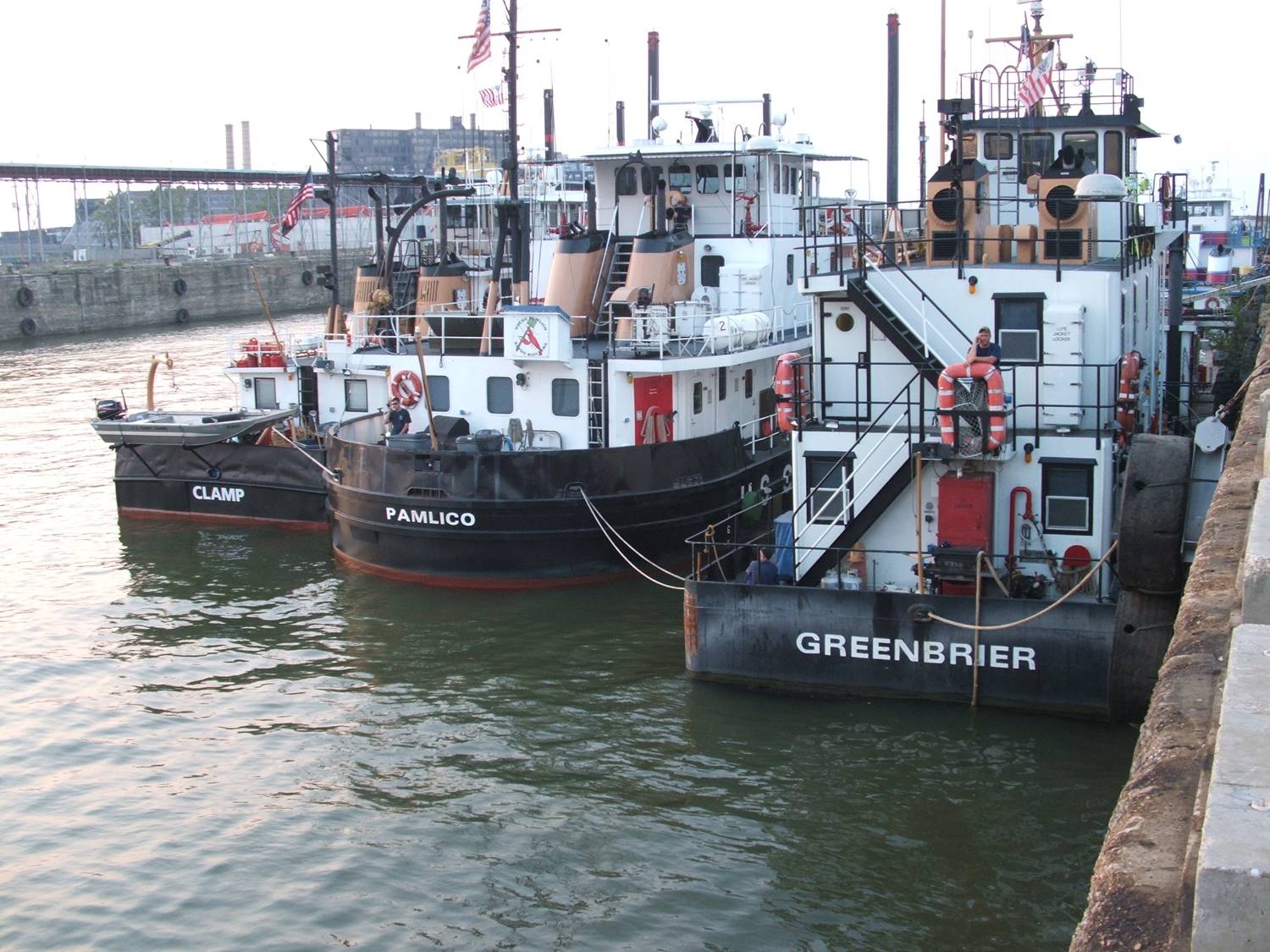 equipment and pumped putrid water out of the Coast Guard facility. Crewmembers then began rebuilding ATON on the Mississippi River and Mississippi River–Gulf Outlet Canal (MRGO), an artificial channel designed as a shipping shortcut to New Orleans, which had funneled storm surge into the city during the hurricane.
equipment and pumped putrid water out of the Coast Guard facility. Crewmembers then began rebuilding ATON on the Mississippi River and Mississippi River–Gulf Outlet Canal (MRGO), an artificial channel designed as a shipping shortcut to New Orleans, which had funneled storm surge into the city during the hurricane.
Maintaining ATON in the fetid heat and humidity of south Louisiana can be grueling even under normal circumstances. In addition to coping with Katrina-caused debris and pollution, the crew had to be aware of alligators and water moccasins. Before evacuating for Hurricane Katrina, Lewald had loaded as much ATON equipment onto Pamlico’s deck as it could carry. This precaution paid off by enabling the tender to rebuild many aids without waiting for additional ATON assets. The weather had cooled slightly after the hurricane, but crews of the Pamlico and the other ATON units worked long hot days around dangerous equipment as they drove piles; salvaged debris; welded structures; and wired lights, batteries and solar panels.
On Sept. 11th, Petty Officer 2nd Class Todd Brischetto reported aboard for temporary duty as a corpsman. It was not a moment too soon, as Pamlico’s crew sustained its only significant injury on the 13th. Fireman Kanha Mounizay, inventor of the “amnesty boxes” during the evacuation of New Orleans, fell and severely cut his arm while constructing an aid. Brischetto provided first aid, but recommended Mounizay get treatment at a hospital. The nearest operational hospital was in New Orleans, so 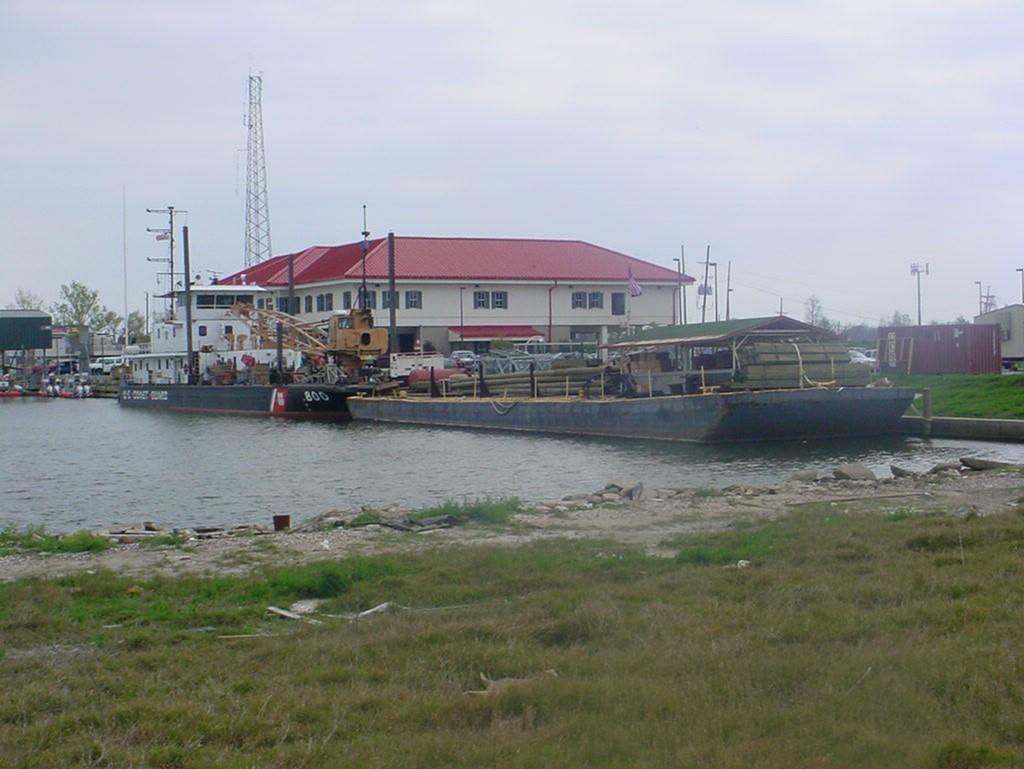 the tender had to offload Mounizay at Port Sulfur. Brischetto and another crewman then drove Mounizay to the city in a borrowed vehicle, negotiating damaged roads, debris, and obstructions along the way. Mounizay enjoyed a full recovery thanks to Brischetto and the driver.
the tender had to offload Mounizay at Port Sulfur. Brischetto and another crewman then drove Mounizay to the city in a borrowed vehicle, negotiating damaged roads, debris, and obstructions along the way. Mounizay enjoyed a full recovery thanks to Brischetto and the driver.
Meanwhile, Coast Guard ATON Cutters Hatchet, Hudson, Greenbrier and Cypress arrived bringing much needed supplies. On the 16th, the ATON crews were treated to a barbeque at Venice. It was a welcome change of cuisine, as food was running low and the crew was subsisting on cases of military field rations, MREs, and bottled water squirreled on board before Pamlico had left Chalmette.
The progress of work accelerated and, by Sept. 20th, the range and lateral lights in Head of Passes and Southwest Pass had been restored. The lighthouse at Port Eads, the only local structure to survive the hurricane, was relit by ANT-Venice. Other aids were temporarily corrected for later rebuilding. As the aids were placed in temporary order, Hurricane Rita began brewing in the Gulf.
For the second time within a month, the Pamlico was forced to seek sh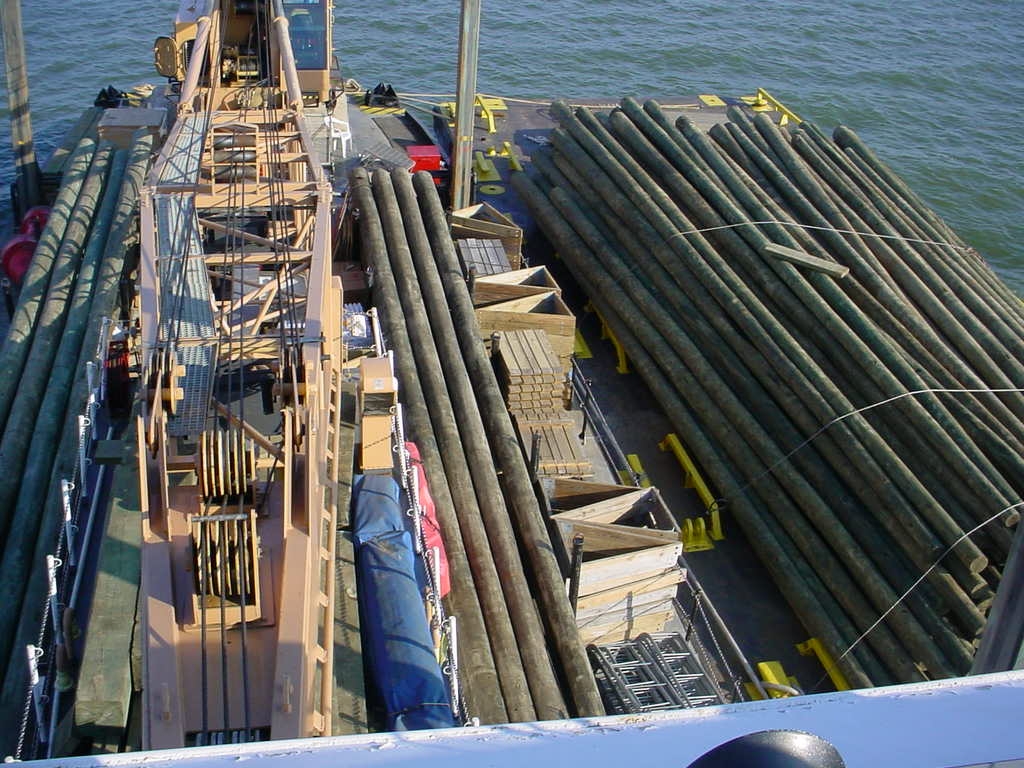 elter from an incoming hurricane. This time, the tender and its flotilla of ANT and station boats hunkered down in Lake Bourne northeast of New Orleans, where the Intracoastal Waterway intersects the Rigolettes Channel. Hurricane Rita battered the boats with sustained winds of 50 knots and gusts of over 75 knots, which was particularly unpleasant for crews of the 41-foot utility boats. Nonetheless, all watercraft escaped damage and sailed back toward New Orleans on the morning of the 25th.
elter from an incoming hurricane. This time, the tender and its flotilla of ANT and station boats hunkered down in Lake Bourne northeast of New Orleans, where the Intracoastal Waterway intersects the Rigolettes Channel. Hurricane Rita battered the boats with sustained winds of 50 knots and gusts of over 75 knots, which was particularly unpleasant for crews of the 41-foot utility boats. Nonetheless, all watercraft escaped damage and sailed back toward New Orleans on the morning of the 25th.
Unfortunately for Texas but fortunately for Pamlico, Rita made landfall far enough west that the tender’s rebuilt navigational aids survived. Profoundly grateful that their work had not been undone, crewmembers were in serious need of rest. But where to go? Pamlico’s homeport at Integrated Support Command (ISC) New Orleans, located in the Bywater Neighborhood near the Industrial Canal, was so severely damaged it had to be abandoned. Several months before, Lewald had met the mayor of Mandeville, Louisiana, located on the north shore of Lake Pontchartrain, who offered to accommodate the tender.
Moored in Mandeville, Pamlico’s crew could finally rest. Local residents were very grateful and brought the men copious amounts of home-cooked food. At no time would things return to normal, just as New Orleans itself would never be the same. 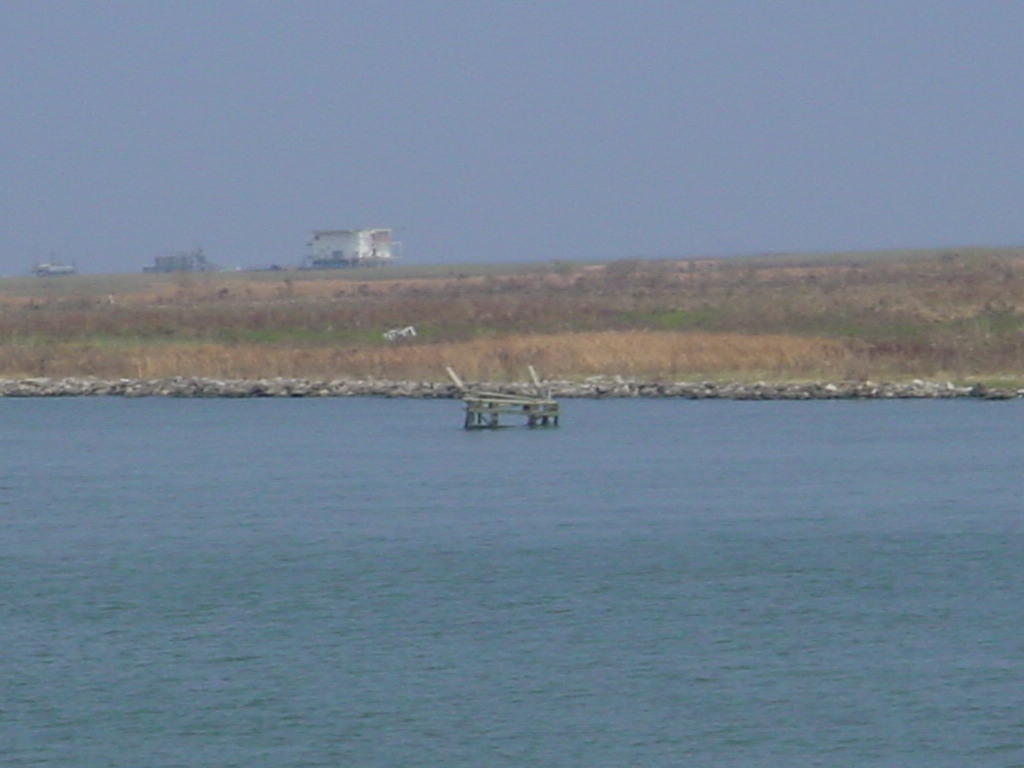 However, crewmembers could finally sort out their personal lives and implement deferred maintenance on their ship. Hurricanes Katrina and Rita had damaged many of their homes. Katrina had put the executive petty officer’s (XPO) pregnant wife under so much stress she had gone into labor. The couple declined repeated suggestions by the XPO’s shipmates to name their new baby “Storm.”
However, crewmembers could finally sort out their personal lives and implement deferred maintenance on their ship. Hurricanes Katrina and Rita had damaged many of their homes. Katrina had put the executive petty officer’s (XPO) pregnant wife under so much stress she had gone into labor. The couple declined repeated suggestions by the XPO’s shipmates to name their new baby “Storm.”
Gradually, the crew began to comprehend the magnitude of their accomplishments. In slightly less than a month, Pamlico’s crew had played a critical role in evacuating over 7,000 storm victims and rebuilding enough aids to navigation to restore the Mississippi River to commercial traffic. Yet muc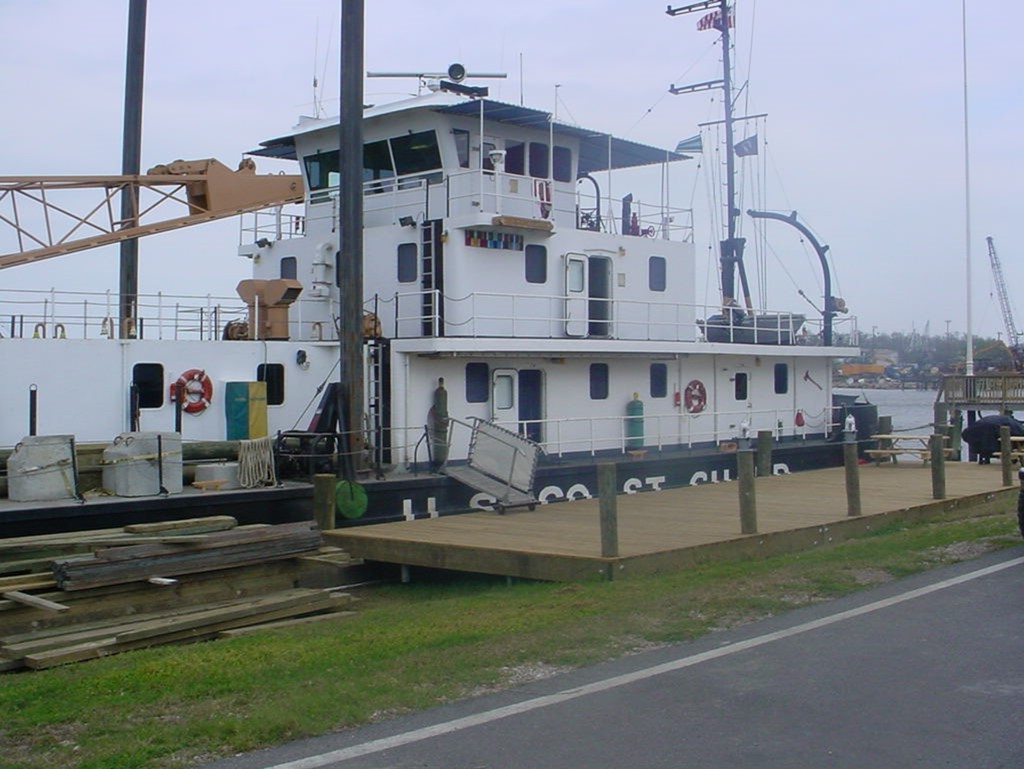 h remained to be done and their work schedule would continue to be busy for months. Even as late as 2007, nearly two years after Hurricane Katrina, Pamlico would split its time between a self-constructed mooring at Station New Orleans, in Metairie, Louisiana, and further repairs near Venice.
h remained to be done and their work schedule would continue to be busy for months. Even as late as 2007, nearly two years after Hurricane Katrina, Pamlico would split its time between a self-constructed mooring at Station New Orleans, in Metairie, Louisiana, and further repairs near Venice.
Between 2004 and 2007, Pamlico’s crewmembers endured and responded to seven major storms, including hurricanes Katrina and Rita. Their resiliency and commitment, as well as Lewald’s leadership enabled them to play a vital role in the response to Katrina. As Lewald later recalled, “On one occasion, the District 8 Gold Badge was aboard during an ATON trip and we received notice that another storm was brewing. I said to him, ‘I’m not sure these guys can take another hit’—I was wrong, they rallied!”
The story of the Pamlico’s hard work and devotion to duty is an enduring testament to the importance of the Coast Guard’s ATON community. The tender’s men and their mission form an oft forgotten, but vital part of the service’s long blue line.
In case you missed Part I, please read it here.